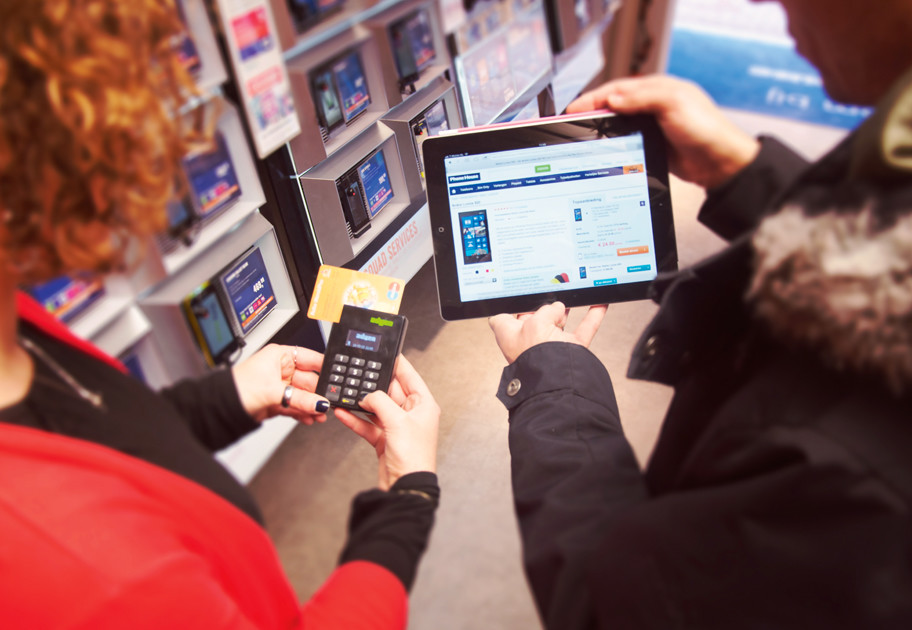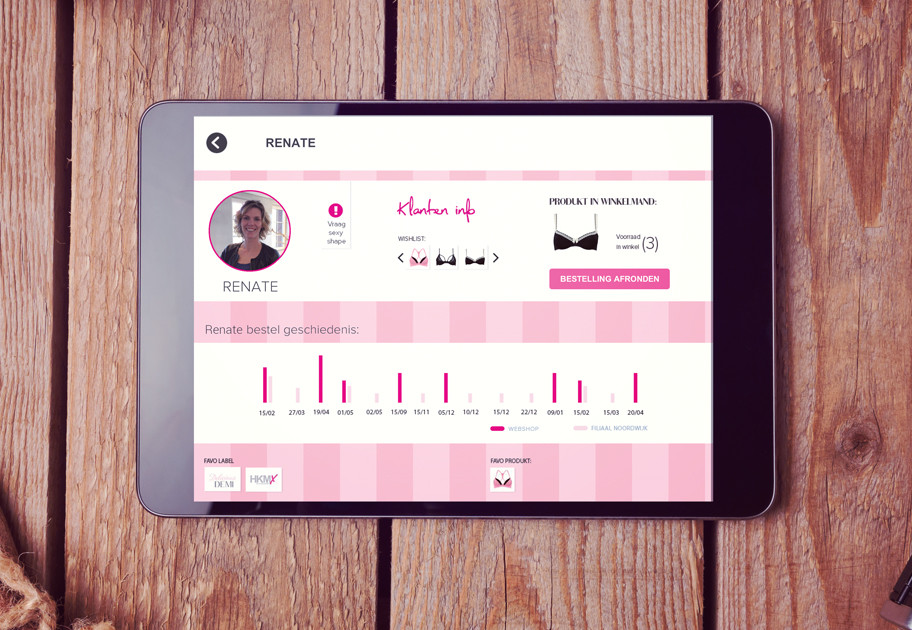1. Employee empowerment
A quick fact check. Over 90% of consumers use – for any number of purposes – a smartphone in the store. About 40% compare prices, an equal percentage contact friends or family for advice, 36% take pictures of products, 29% take pictures of product specifications and deals, 28% scan QR codes or barcodes, and 23% sometimes even buy a product directly in store using the smartphone.
On average, around 60% of all customer journeys (with a peak of up to 90% in consumer electronics) now have an online component whereby smartphones and tablets are over-represented and are still gaining share.
This while almost 70% of consumers indicate that they sometimes enjoy showrooming (viewing in store, buying online), an even greater percentage say they do a little webrooming (researching online, buying in store), and a similarly large percentage use all the channels criss-cross and in no particular order, called “boomerooming”.
In short: for us shoppers the digital and physical shopping worlds are one and the same. High time for retailers to empower the staff digitally!
There are tons of benefits to be won from equipping your store staff with smart technologies that connect online and offline with one another:
1. Single view of stock:
An at-a-glance overview of stock levels, prices, product specifications, related items, inspiring content and product reviews.
This changes the store staff back into true product experts and ensures that every customer can receive the best possible service without needing to use his or her own smartphone to gather that information.
A good example is ProDirect Soccer in the UK, which unlocks all relevant data about their football shoes in the stores: personnel have direct access through tablets and touchscreens to information like which shoes make the most crosses, tackle the most opponents and score the most goals, and which players are wearing which shoes. What’s more, the staff can also order any item right there in the store for you, arrange payment and send it to your address if you like. The only thing you’ll need your smartphone for now, is to take photos and videos of the amazing concept store.
2. Single view of customer:
Insight into all relevant customer data (sizes, preferences, purchase history, wish list information, etc.) makes sure that store staff can offer every customer a personal experience in which the chance of a successful shopping trip is maximised.
In an experiment, Hunkemöller had already made it possible to automatically identify its customers through a combination of in-store beacons and a mobile loyalty app. The employee in the store receives a notification on her tablet with the name of the customer who has just walked in, her sizes, purchase history, wish list items, personal preferences and loyalty status, giving the staff member a head start in offering maximum personal service.
3. Endless aisle to minimise lost sales:
Having to say no to a sale in retail should be a punishable offence! By equipping all employees with a “mobile kiosk”, they become more aware of the fact that with every customer contact, every product need can be fulfilled.
The customer can pay directly with the employee (take the well-known Apple Store Geniuses, for example). No lost sale, no lost time, but you do get a perfect customer experience.
4. Omnichannel servicing:
Store personnel are a vital component of every omnichannel operation. Take a service like check & reserve, for instance, whereby the consumer expects to receive an almost instantaneous response to his query on the availability of an item and whether it has been reserved.
In practice, up to 50% of these requests tend to “bounce”, because the staff aren’t aware of the request, do not react adequately to it, cannot locate the item in question, or don’t have the item in stock at all.
These are all issues that can easily be resolved by equipping every employee with a mobile device that enables them to receive real-time notifications, offers the possibility to interact directly with the customer and helps with locating the stock.
5. “2nd placement” of knowledge and expertise
Not only can you bring online knowledge & information to the store employee, the possibilities in the other direction are also endless. Why shouldn’t you equip your employees with devices which they can use to answer online customer questions, provide online advice, or even offer personal shopping services to online customers?
Personal shoppers at Nordstrom use their mobile devices in the store to send personal recommendations to their customers via text messaging, who in turn can purchase and pay for the items completely automatically by simply texting “Buy”. This project, named TextStyle, shows us that the boundaries between digital and physical are becoming more and more blurred.
A smart way to make more effective use of in-store personnel and to offer quicker and more personal service to online customers!
BYOD | Bring you own device
An important term within the framework of employee empowerment is “Bring Your Own Device”. Retailers give their employees access to the aforementioned services through their own personal devices (usually a smartphone). One huge advantage is that the employees are more comfortable working with their own devices and that these devices are often more up to date than those supplied by the retailer, plus the fact that the organisation doesn’t have to make a huge (one-off) investment in hardware. Granting access to staff through a dedicated app is – to keep it simple – sufficient.
Luxottica – the parent company of Sunglass Hut – is already experimenting with BYOD by unlocking product and stock level information for its store staff.
Privacy and user right management are naturally still a challenge, but our prediction is that the BYOD concept will really take off in the coming years.
2. Employee engagement
What’s the point of empowerment if your staff isn’t engaged or motivated enough to actually use it? A poll conducted by the American firm Gallup reveals that only a third of employees are actively involved with the company. Just imagine that two thirds of your store staff is hardly interested at all in your formula. What kind of customer experience would this lead to?
Lingerie chain Hunkemöller is looking for an easier and quicker way to inform, motivate and engage their store staff in order to bring them closer to the brand. The company was the first to launch the Employee App “InTouch”, which gives employees access to features including:
- Chat function with colleagues, managers and the board of directors
- Inspirational (product) videos
- Polls
- Q&As
- Academy
Kega & Hunkemöller succesvol with Employee Engagement
Research into employee apps reveals a number of interesting facts:
- Over three quarters of the users say they (also) use the app outside working hours;
- News and (product) videos are features that are perceived as very pleasant and give employees a sense of involvement, being part of a community in which information is available to only a select group.
- Close to 90% indicate that the (product) videos provide new insights that can be applied at work and therefore serve as helpful aids in better servicing the customer.
- Users experience an increased sense of engagement with the company.
- Users show an increased Net Promotor Score, are more likely to give their employer a positive (or more positive!) recommendation when speaking with others.
The digital employee
Turn employee engagement and empowerment into a top priority, in the interest of the employees themselves, your brand and especially your customers. Visualise yourself in the employee journey and facilitate (mobile, digital) solutions which maximise their added value for the formula. Only then will you be successful as a re
.png?width=641&height=253&name=Kega%20logo%20(white%20bg).png)


